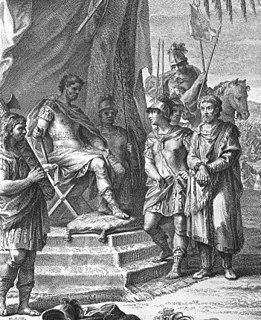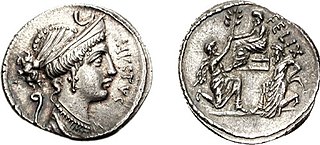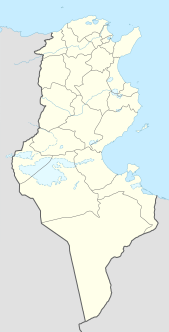This article relies largely or entirely on a single source .(January 2021) |
| Millennium: | 1st millennium BC |
| Centuries: | |
| Decades: | |
| Years: | |
| Categories: |
This article concerns the period 119 BC – 110 BC.
This article relies largely or entirely on a single source .(January 2021) |
| Millennium: | 1st millennium BC |
| Centuries: | |
| Decades: | |
| Years: | |
| Categories: |
This article concerns the period 119 BC – 110 BC.
== {{dr|y|y|{{1x|-}}{{{year}}}0|{{1x|-}}{{{1}}}|na}} == {{trim|{{transcluded section|{{dr|y|y|{{1x|-}}{{{year}}}0|{{1x|-}}{{{1}}}|na}}}} {{#section-h::{{dr|y|y|{{1x|-}}{{{year}}}0|{{1x|-}}{{{1}}}|na}}|Events}}}} == {{dr|y|y|{{1x|-}}{{{year}}}0|{{1x|-}}{{{1}}}|na}} == {{trim|{{transcluded section|{{dr|y|y|{{1x|-}}{{{year}}}0|{{1x|-}}{{{1}}}|na}}}} {{#section-h::{{dr|y|y|{{1x|-}}{{{year}}}0|{{1x|-}}{{{1}}}|na}}|Events}}}} == {{dr|y|y|{{1x|-}}{{{year}}}0|{{1x|-}}{{{1}}}|na}} == {{trim|{{transcluded section|{{dr|y|y|{{1x|-}}{{{year}}}0|{{1x|-}}{{{1}}}|na}}}} {{#section-h::{{dr|y|y|{{1x|-}}{{{year}}}0|{{1x|-}}{{{1}}}|na}}|Events}}}} == {{dr|y|y|{{1x|-}}{{{year}}}0|{{1x|-}}{{{1}}}|na}} == {{trim|{{transcluded section|{{dr|y|y|{{1x|-}}{{{year}}}0|{{1x|-}}{{{1}}}|na}}}} {{#section-h::{{dr|y|y|{{1x|-}}{{{year}}}0|{{1x|-}}{{{1}}}|na}}|Events}}}} == {{dr|y|y|{{1x|-}}{{{year}}}0|{{1x|-}}{{{1}}}|na}} == {{trim|{{transcluded section|{{dr|y|y|{{1x|-}}{{{year}}}0|{{1x|-}}{{{1}}}|na}}}} {{#section-h::{{dr|y|y|{{1x|-}}{{{year}}}0|{{1x|-}}{{{1}}}|na}}|Events}}}} == {{dr|y|y|{{1x|-}}{{{year}}}0|{{1x|-}}{{{1}}}|na}} == {{trim|{{transcluded section|{{dr|y|y|{{1x|-}}{{{year}}}0|{{1x|-}}{{{1}}}|na}}}} {{#section-h::{{dr|y|y|{{1x|-}}{{{year}}}0|{{1x|-}}{{{1}}}|na}}|Events}}}} == {{dr|y|y|{{1x|-}}{{{year}}}0|{{1x|-}}{{{1}}}|na}} == {{trim|{{transcluded section|{{dr|y|y|{{1x|-}}{{{year}}}0|{{1x|-}}{{{1}}}|na}}}} {{#section-h::{{dr|y|y|{{1x|-}}{{{year}}}0|{{1x|-}}{{{1}}}|na}}|Events}}}} == {{dr|y|y|{{1x|-}}{{{year}}}0|{{1x|-}}{{{1}}}|na}} == {{trim|{{transcluded section|{{dr|y|y|{{1x|-}}{{{year}}}0|{{1x|-}}{{{1}}}|na}}}} {{#section-h::{{dr|y|y|{{1x|-}}{{{year}}}0|{{1x|-}}{{{1}}}|na}}|Events}}}} == {{dr|y|y|{{1x|-}}{{{year}}}0|{{1x|-}}{{{1}}}|na}} == {{trim|{{transcluded section|{{dr|y|y|{{1x|-}}{{{year}}}0|{{1x|-}}{{{1}}}|na}}}} {{#section-h::{{dr|y|y|{{1x|-}}{{{year}}}0|{{1x|-}}{{{1}}}|na}}|Events}}}}
== {{ucfirst:{{{1}}}}} == {{preprocess|{{((}}transcluding articles {{!}} {{for loop|{{!}}|call=Year article|pc1n=1|pc1v={{{decade}}}0|pv=2|-9|-8|-7|-6|-5|-4|-3|-2|-1}} {{!}} {{#ifeq:{{{decade}}}|-0|{{void|There is no BC year 0}}|{{Year article|{{{decade}}}0}}}} {{))}}}} {{for loop| |call=Transclude {{{1}}}|{{{decade}}}9|{{{decade}}}8|{{{decade}}}7|{{{decade}}}6|{{{decade}}}5|{{{decade}}}4|{{{decade}}}3|{{{decade}}}2|{{{decade}}}1}} {{#ifeq:{{{decade}}}|-0|{{void|There is no BC year 0}}| {{Transclude {{{1}}}|{{{decade}}}0}} }} == {{ucfirst:{{{1}}}}} == {{preprocess|{{((}}transcluding articles {{!}} {{for loop|{{!}}|call=Year article|pc1n=1|pc1v={{{decade}}}0|pv=2|-9|-8|-7|-6|-5|-4|-3|-2|-1}} {{!}} {{#ifeq:{{{decade}}}|-0|{{void|There is no BC year 0}}|{{Year article|{{{decade}}}0}}}} {{))}}}} {{for loop| |call=Transclude {{{1}}}|{{{decade}}}9|{{{decade}}}8|{{{decade}}}7|{{{decade}}}6|{{{decade}}}5|{{{decade}}}4|{{{decade}}}3|{{{decade}}}2|{{{decade}}}1}} {{#ifeq:{{{decade}}}|-0|{{void|There is no BC year 0}}| {{Transclude {{{1}}}|{{{decade}}}0}} }}

The 2nd century BC started the first day of 200 BC and ended the last day of 101 BC. It is considered part of the Classical era, although depending on the region being studied, other terms may be more suitable. It is also considered to be the end of the Axial Age. In the context of the Eastern Mediterranean, it is referred to as the Hellenistic period.

This article concerns the period 49 BC – 40 BC.
This article concerns the period 59 BC – 50 BC.
This article concerns the period 69 BC – 60 BC.
80s BC is the time period from 89 BC – 80 BC.
This article concerns the period 109 BC – 100 BC.
This article concerns the period 129 BC – 120 BC.
This article concerns the period 139 BC – 130 BC.
This article concerns the period 149 BC – 140 BC.
This article concerns the period 179 BC – 170 BC.
Year 111 BC was a year of the pre-Julian Roman calendar. At the time it was known as the Year of the Consulship of Serapio and Bestia. The denomination 111 BC for this year has been used since the early medieval period, when the Anno Domini calendar era became the prevalent method in Europe for naming years.
Year 112 BC was a year of the pre-Julian Roman calendar. At the time it was known as the Year of the Consulship of Drusus and Caesoninus. The denomination 112 BC for this year has been used since the early medieval period, when the Anno Domini calendar era became the prevalent method in Europe for naming years.
Year 118 BC was a year of the pre-Julian Roman calendar. At the time it was known as the Year of the Consulship of Cato and Rex and the Fifth Year of Yuanshou. The denomination 118 BC for this year has been used since the early medieval period, when the Anno Domini calendar era became the prevalent method in Europe for naming years.

Numidia was the ancient kingdom of the Numidians located in what is now Algeria and a smaller part of Tunisia and small part of Libya in the Maghreb. The polity was originally divided between Massylii in the east and Masaesyli in the west. During the Second Punic War, Masinissa, king of the Massylii, defeated Syphax of the Masaesyli to unify Numidia into one kingdom. The kingdom began as a sovereign state and later alternated between being a Roman province and a Roman client state.

Jugurtha or Jugurthen was a king of Numidia. When the Numidian king Micipsa, who had adopted Jugurtha, died in 118 BC, Jugurtha and his two adoptive brothers, Hiempsal and Adherbal, succeeded him. Jugurtha arranged to have Hiempsal killed and, after a civil war, defeated and killed Adherbal in 112 BC. The death of Adherbal, which was against the wishes of Rome, along with the growing popular anger in Rome at Jugurtha's success in bribing Roman senators, led to the Jugurthine War between Rome and Numidia which, after a number of battles in Numidia between Roman and Numidian forces, eventually led to Jugurtha's capture in 106 BC and his being paraded through Rome as part of Gaius Marius' Roman triumph. He was then thrown into the Tullianum prison where he died of strangulation or starvation in 104 BC. He was survived by his son, Oxyntas.

The Jugurthine War was an armed conflict between the Roman Republic and king Jugurtha of Numidia, a kingdom on the north African coast approximating to modern Algeria. Jugurtha was the nephew and adopted son of Micipsa, King of Numidia, whom he succeeded on the throne, overcoming his rivals through assassination, war, and bribery.
The Siege of Thala, part of the Jugurthine War, was an investment of the Numidian town of Thala by a Roman army. The Romans were commanded by the proconsul Quintus Caecilius Metellus, the Thalans by an unknown Numidian commander. The Romans main objective was to capture the Numidian king Jugurtha who was reported to be in Thala, but he escaped before the legions reached the fortress town. Metellus then besieged the town to get hold of one of Jugurtha's treasuries which was stored in Thala. The fortress town was besieged for forty days after which most of its inhabitants committed suicide by setting fire to the town.
The Siege of Cirta was fought between the rival Numidian kings Adherbal and Jugurtha in 113 BC. They were contesting the throne of Numidia after the death of King Micipsa. Jugurtha invaded Adherbal's territory, defeated him and besieged him in his capital Cirta. Two Roman deputations attempted to negotiate a settlement, but Jugurtha ignored them. When the city surrendered he tortured Arherbal to death and executed all who had bourne arms against him, including numerous Romans. This last action was to spark the outbreak of the Jugurthine War between Rome and Numidia.
The Siege of the fortress at Muluccha, part of the Jugurthine War, was an investment of a Jugurthine fortress by a Roman army in 106 BC. The Romans were commanded by Gaius Marius, the Numidians by an unknown commander. The Romans main objective was to capture one of king Jugurtha's treasuries which was reported to be inside the fortress. Marius besieged the fortress town and finally took it by trickery.

The Siege of Zama, part of the Jugurthine War, was an investment of the Numidian town of Zama by a Roman army. The Romans were commanded by Quintus Caecilius Metellus, one of the consuls of 109 BC, while the Numidians were under the overall command of Jugurtha, the king of Numidia. The Romans' main objective was to lure Jugurtha into a set-piece battle; the Numidians had been wearing down the Roman legions by guerilla warfare and the Roman commander hoped the siege would pressure the Numidian king into giving battle. Jugurtha did not let himself be goaded into a pitched battle and kept up his opportune attacks while the defenders of Zama kept the Romans at bay. Failing to take the city and failing to provoke the Numidian king into entering a set-piece battle, the Romans gave up on the siege and marched back to the Roman province of Africa.